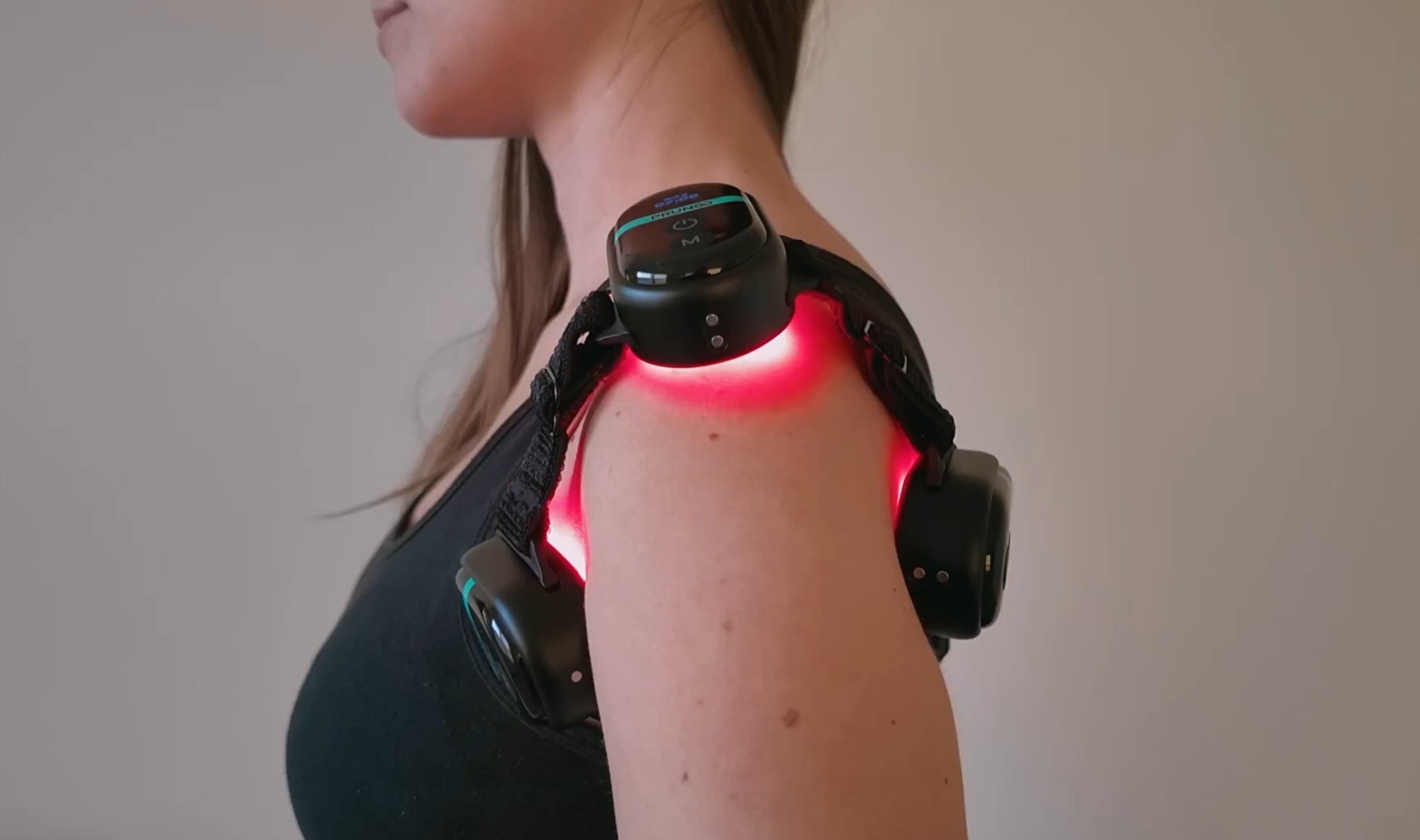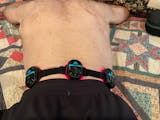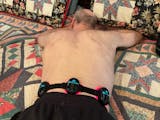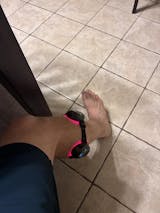You're convinced of the power of Red Light Therapy. Now, you face the most important practical question: which type of device is the right tool for your specific goals?
The market is dominated by two distinct philosophies: large, stationary red light panels that promise broad coverage, and compact, targeted wearable devices like the PRUNGO FluxGo, which promise precision and efficiency.
Which is the superior choice for deep, lasting relief? This in-depth guide will break down the crucial differences in their core technology, energy delivery, and real-world flexibility to help you make an informed investment.

At a Glance: The Core Philosophical Differences Before we dive into the specs, it's crucial to understand that these two types of devices are built to do fundamentally different jobs.
| Specification | Wearable (e.g., PRUNGO FluxGo) |
Panels (Typical) | The Bottom Line |
| Philosophy | Targeted, On-Skin Dose |
Broad, Ambient Exposure |
Two completely different treatment models. |
| Primary Use | Joints, Muscles, Specific Pain |
General Surface Wellness | Wearables are specialists; panels are generalists. |
| Light Sources | Synergistic (LED + Laser) |
LEDs Only | A Laser is essential for deep-tissue therapy. |
| Energy Delivery | Focused, "Zero-Waste" Dose |
Scattered, High Energy Loss |
On-skin application is fundamentally more efficient. |
| Flexibility | Adapts to Your Body (Conforming) | Rigid and Stationary | Wearables offer superior precision and conformity. |
| Portability | Portable, Use Anywhere, Hands-Free |
Stationary, Use at Home, Tethered |
Wearable design is the key to consistency. |
The Foundation: The Critical Difference Between "Coverage" and "Dose" The primary marketing claim of a panel is coverage. It can illuminate a large surface area of your body at once.
The primary goal of a wearable device is dose. It is engineered to deliver the maximum therapeutic energy to a specific, targeted area.

Understanding this difference is the key to choosing the right tool. For surface-level applications like skin health, broad coverage can be beneficial. But for musculoskeletal issues—pain deep in your joints, tendons, and muscles—a powerful, concentrated dose is what drives real, lasting change.
The Tech Showdown: Why a Laser is Not a Luxury—It's a Necessity This is a non-negotiable point of difference in technology.
-
Red Light Panels: Almost exclusively use standard LED lights. LEDs produce scattered, non-coherent light. Like a floodlight, their energy is excellent for the surface but disperses rapidly, losing the power needed to penetrate deep into complex joint structures or dense muscle tissue.
-
PRUNGO FluxGo: Utilizes a Dual-Light Engine. This combines focused LEDs for surface prep with a medical-grade LLLT Laser, enhanced with polarization. The laser's coherent, focused energy acts like a spotlight, designed specifically to travel deep with minimal energy loss. The polarization further optimizes this by reducing surface scatter, acting like a "sniper scope" to ensure more potent energy reaches the true source of your pain.

Verdict: For deep-seated issues in joints, tendons, or muscles, a panel's LED-only system is fundamentally outmatched. The Laser and Polarization technology in a device like FluxGo gives it an undeniable scientific advantage for deep, targeted therapy.
The Usability Test: True Targeting vs. Still Positioning How well can each device actually treat your specific point of pain?
-
Red Light Panels: Are rigid and flat. Treating a curved surface like a knee, shoulder, or your neck requires you to awkwardly position your body several inches away, hoping the light hits the right spot. This leads to massive energy loss and imprecise treatment.
-
PRUNGO FluxGo: Is built on a philosophy of True Modular Freedom. You can wrap the modules around the front, sides, and back of your knee. You can place a single module precisely on a knot in your shoulder. The device conforms to your body, ensuring perfect on-skin contact and delivering the "zero-waste" dose exactly where you need it.
Verdict: Panels force your body to adapt to the device. FluxGo's modular, conforming design allows the therapy to adapt perfectly to your body, making it the clear winner for precision and true targeted relief.

"My job involves sitting for long hours... my lifestyle is pretty extreme. I'm able to use my laptop and just go about my day as I normally would without slowing down at all." – Ryan, Videographer
[Read how Ryan integrates recovery into his demanding schedule →]
The Final Verdict: Which One Should You Choose?
The choice comes down to your primary goal.
Choose a Red Light Panel if... your goal is general, surface-level wellness, like improving the skin on your face or back, and you have the time for a daily, stationary routine. It is a "generalist" tool.
Choose PRUNGO FluxGo if... your priority is solving specific, deep-seated musculoskeletal pain. If you need a device whose Laser technology is engineered for depth, whose modular design allows for true precision targeting, and whose wearable convenience guarantees the consistency needed for real results, then FluxGo is, demonstrably, the specialist tool for the job.
















Share:
Beyond Repair: A Stunt Performer’s Playbook for Rebuilding Strength After Trauma
How to Stretch Lower Back